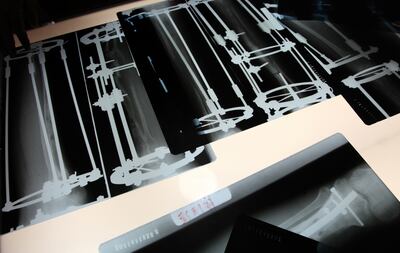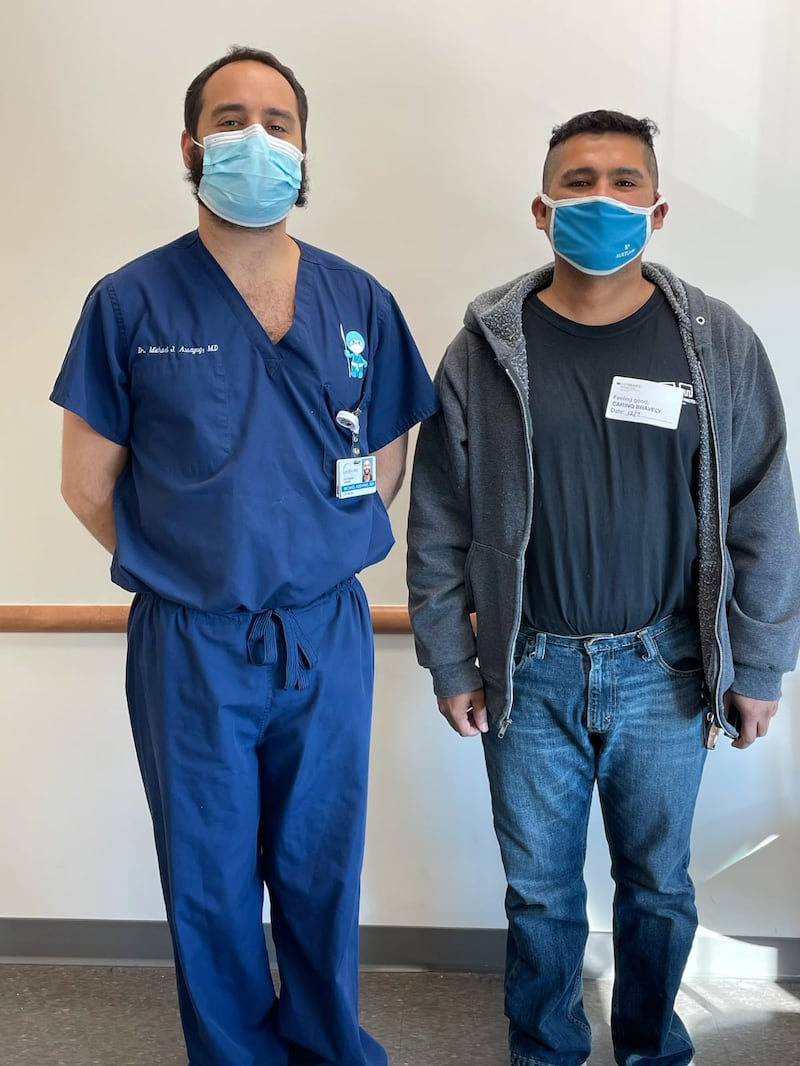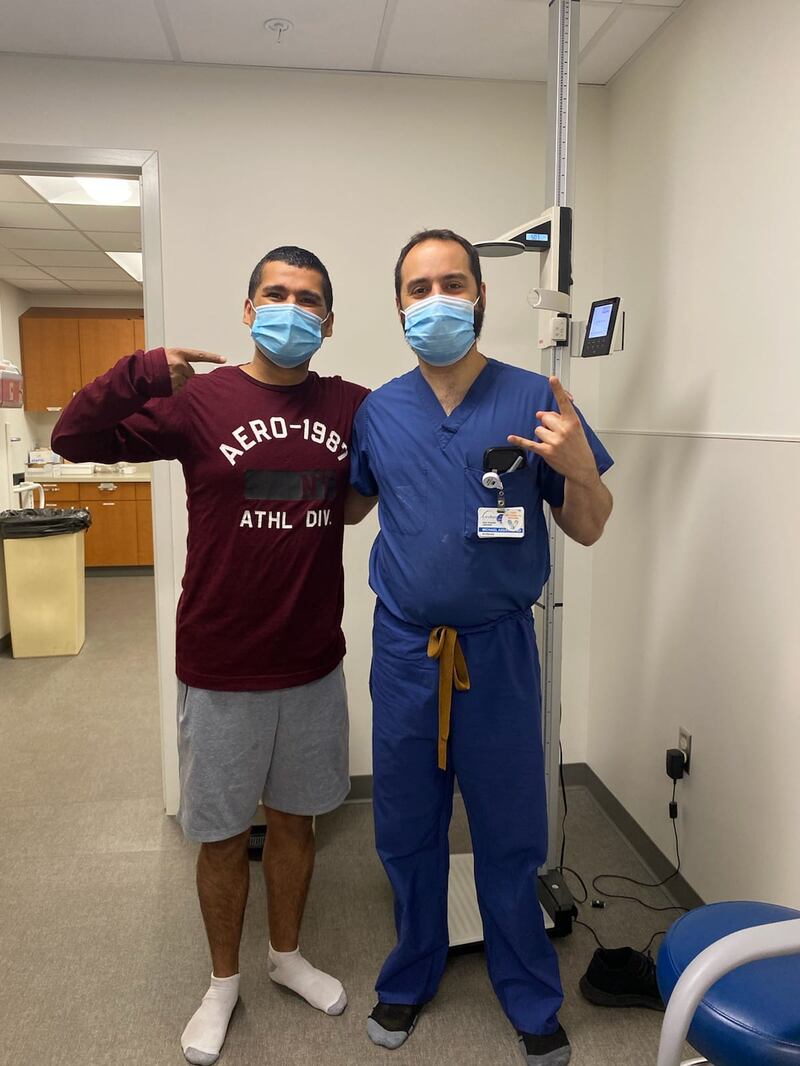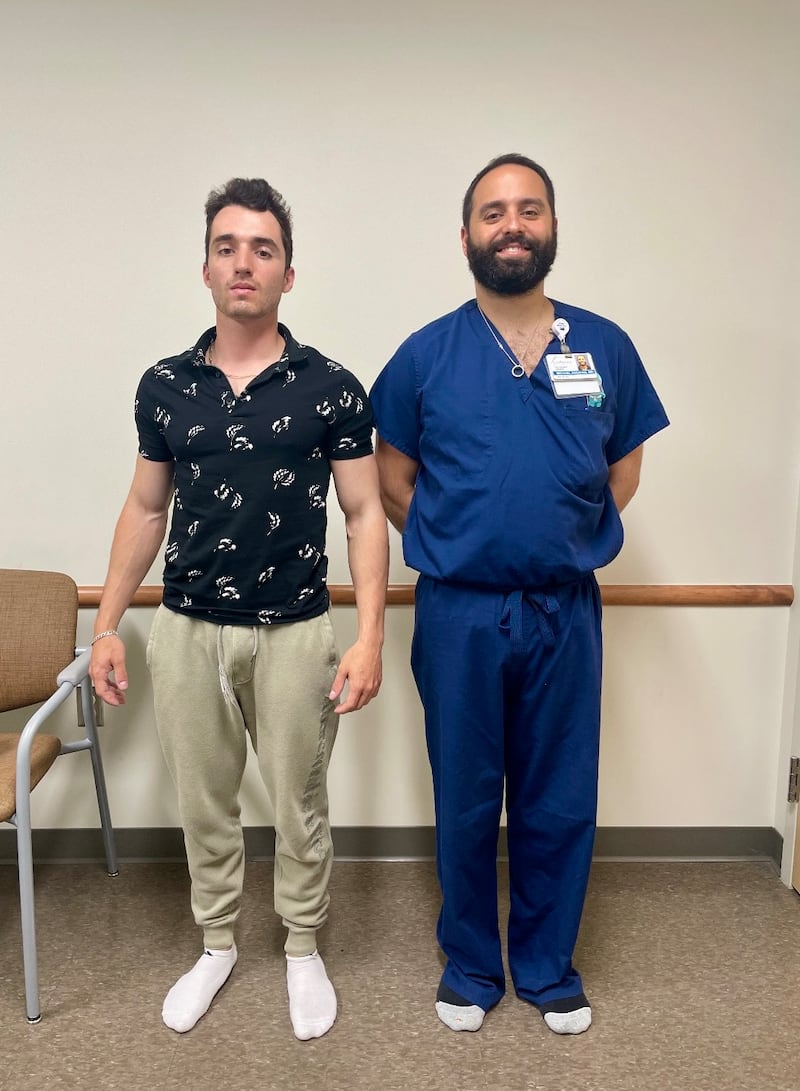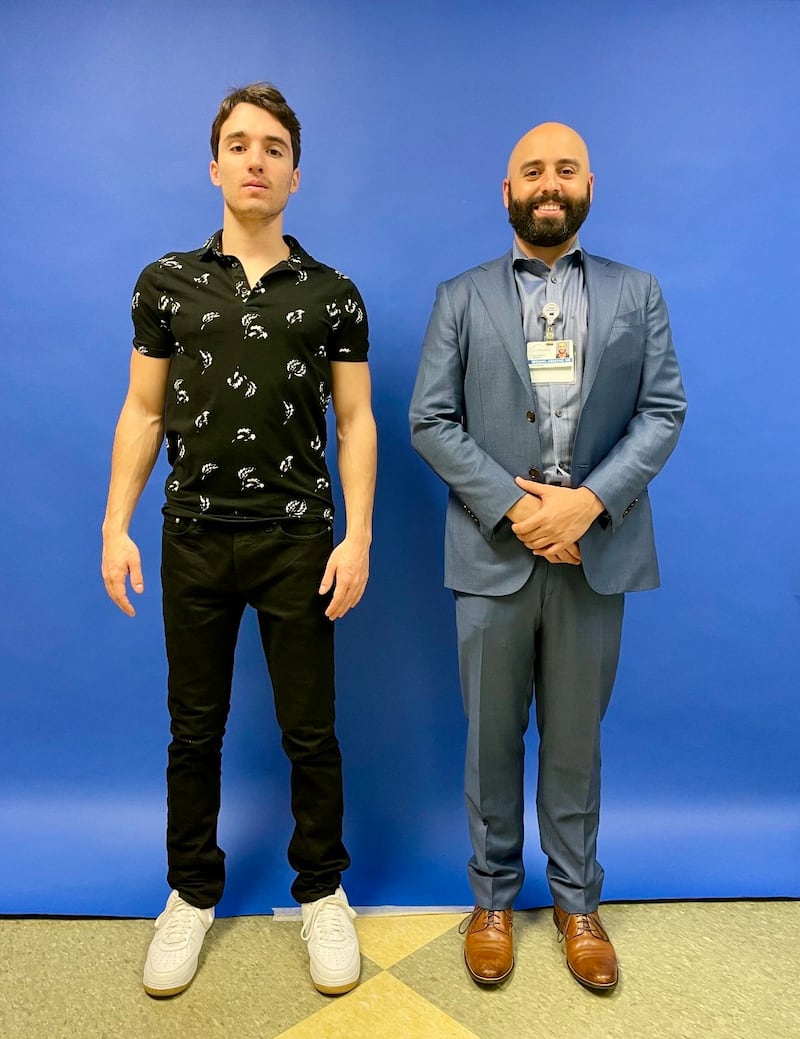At five foot, four inches (1.63 metres), Raza Fayyaz had always felt self-conscious about his below-average height.
“I am an introvert and on top of that, having body-image issues pushed me to shy away from gatherings and meeting people,” the 42-year-old IT manager from Ohio told The National.
Rather than put up with it, Mr Fayyaz joined thousands of men and women who have turned to surgery to make themselves taller, many of them travelling to other countries for the complicated procedure.
Today, Mr Fayyazz is five foot, seven inches (1.70 metres), after spending $95,000 on an operation at Sinai Hospital in Baltimore, Maryland.
“At the end of 2020 came the golden opportunity. The interest rates on loans were fairly low and corporate America was working from home due to Covid,” he said.
“Therefore, I knew if I had this surgery and was bedridden, I could still work remotely.”
Dr Michael Assayag, who carried out the procedure, said demand for the surgery is soaring, with patients coming to him from around the world, including from the UAE.
“In the past two years, I have noticed a huge increase in interest. In 2017, I used to get two inquiries a week. I now get up to five a day,” he said.
Recent media coverage has shown that leg lengthening is “not science fiction”, he said.
“It is a method that works, is predictable and gives good results in the right hands … The technology is getting better and better.”
Twenty years ago, leg lengthening was done with cumbersome external mechanisms.
“Nowadays, the lengthening is done with very sleek internal devices. It makes the recovery much more comfortable and quicker,” Dr Assayag said.
Such advances make it easier for patients to undergo the procedure while continuing to work remotely or at a desk job.
Still, the process is arduous. Limb lengthening takes months, and the surgery is not the easiest to undergo.
Complications can include a discrepancy in leg length, arthritis, injuries to nerves and muscles being overly stretched.
Surgeons break the leg bones then fit a metal rod, known as a Stryde Precice Nail, between the two pieces.
The nail pulls the bones apart by 1mm a day. Bone regenerates to fill the gap and the process continues until the desired height is reached.
A maximum of 8cm of growth is recommended, though some people choose to get both their thigh and shin bones stretched for even greater lengthening.

'Height dysphoria'
So why do people choose to undergo an expensive and seemingly drastic procedure only to gain a few centimetres?
“This is a subset of people who are unhappy with their height and feel that society has set a standard of height a man should be and what height a woman should be,” Dr Assayag explained.
“People blame their height for their shortcomings personally and professionally. They feel it is limiting them in all spheres of life.”
Dr Dror Paley, another expert who has been carrying out leg-lengthening surgery for more than three decades, says patients suffer from “height dysphoria”.
In plain English, it means being unhappy with one’s height.
“Height dysphoria is about personal body image, not height,” Dr Paley, who runs a clinic in Palm Beach, Florida, told The National.
“All of these patients had a similar psychological profile – they perceived themselves as short. They weren't doing it to become basketball players.
“They were doing things like stuffing their shoes or trying to avoid standing next to other people in a line.
“You might judge someone who is five foot, 10 inches (1.78 metres) as not short, but some people [of that height] see themselves as short. Height dysphoria is about personal body image, not height.”
Limb lengthening dates back to the turn of the 20th century, with the surgery first being performed in Italy.
However, it came of age in the 1950s thanks to work pioneered by a Soviet orthopaedic surgeon, Gavriil Ilizarov, who treated soldiers injured in the Second World War.
“I was the first North American to go and study with him,” Dr Paley said. “His technique was unknown to the West until 1981.”
The surgery’s prime purpose was to treat complicated fractures and help patients whose legs were of different lengths.
Even now, the overwhelming majority of operations are for this cohort of patients, Dr Paley added.
“We do about 100 stature-lengthenings a year compared with 500-600 correcting limb-lengthening discrepancies,” he said.
Recovery is slow, with the patient needing crutches, a walking frame or even a wheelchair for several months.
And the procedure is far from cheap. Dr Paley charges $95,000.
“But it covers everything, the surgeon’s fee, hospitalisation and three months of physical therapy,” he said.
“There is a lot of competition between centres. Unlike other treatments, there is not a lot of experience in doing this surgery.
“People unwittingly are deciding on the basis of a few thousand dollars, rather than taking into account the experience of the person doing the operation.”
Dr Paley said there has been a tremendous increase in demand for cosmetic limb lengthening. But the procedure is not to be considered lightly, as it can come with “horrible complications including disability and death”.
There have been no such problems for Mr Fayyaz.
“This surgery sounds more barbaric than it truly is. After the surgery, when your bones are broken, you are not in constant pain.
“The actual discomfort experienced by patients primarily stems from the process of lengthening the bones, rather than the surgery itself.”
It was worth it, he said.
“Dr Assayag not only lengthened me, but he also fixed my brain. While the procedure itself focused on physical changes, it had a tremendous impact on my self-confidence and helped address associated mental health issues.”
'I never wanted to be short'
Mark Walker, 24, from New Jersey has no regrets about undergoing the operation, which was also performed by Dr Assayag and cost close to $70,000.
He went from five foot, six inches (1.68 metres) to five foot, 9.5 inches (1.77 metres), which is a little bit taller than the US average.
“I am exactly one year after surgery. I feel great right now,” he said.
“I feel zero pain one year after. I can do everything I could before and my athletic performance is close to what it was before.
“I can touch my toes. I have full knee-bending ability, and most of my muscular strength has returned.”
The main adjustment has been getting used to having a higher centre of gravity.
“Anyone who wants to can make a full recovery if they are dedicated to it,” Mr Walker told The National. He added that the surgery was “most definitely” worth it.
“It was everything I expected it to be. It has improved my self-esteem,” he said.
“I never wanted to be short. Having this height was something I always wanted. Having more height as a male benefits me tremendously.”
